Traveling to Mongolia in July means experiencing one of the country's most important cultural events: the Naadam festival. Although the most famous is held in Ulaanbaatar, each town organizes its own version, maintaining the essence of a tradition that combines sport, history, and national pride. Naadam is much more than a festival: it is a window into nomadic identity, where families, horsemen, and wrestlers gather to celebrate “the three manly games”: Mongolian wrestling, horse racing, and archery.
I was lucky enough to experience it in a small village in southern Mongolia, far from the crowds and mass tourism of the capital. This more intimate scale made the experience even more authentic: locals arrived from the steppes on motorcycles or horses, simple food stalls were set up, and the atmosphere was pure local celebration. Seeing children competing in horse races and wrestlers surrounded by songs and shouts of support was one of those travel experiences that connect you deeply with the local culture.
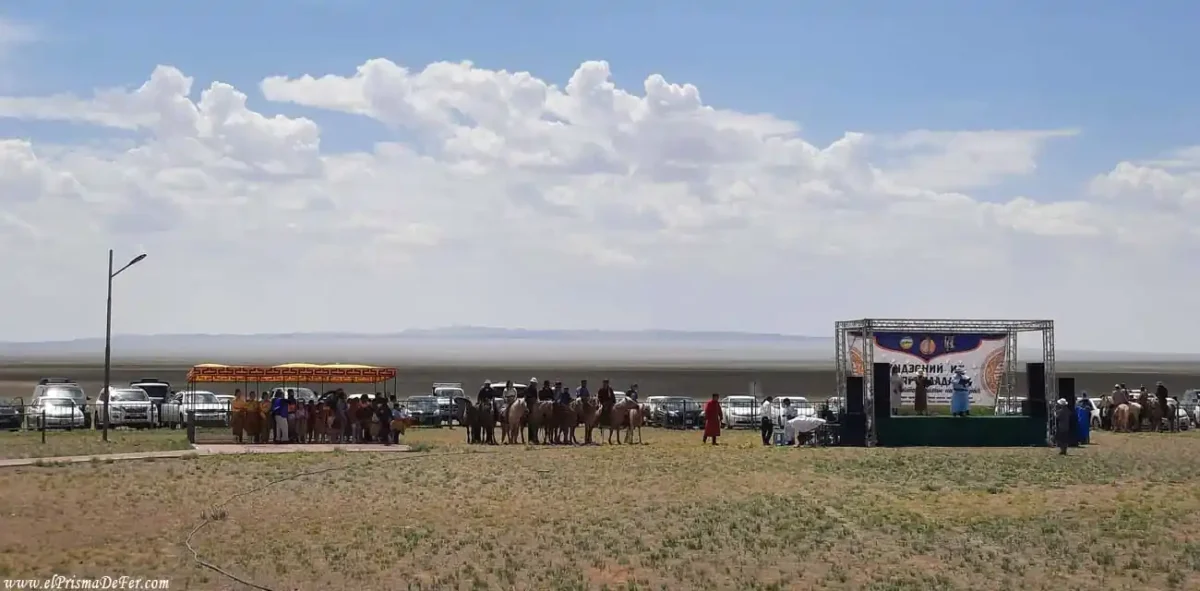

Table of Contents
What is Naadam?
Naadam is Mongolia's most traditional festival, celebrating the country's nomadic culture and history through sports competitions and performances. It focuses on the so-called “three manly games”, which represent historically essential skills for Mongolian warriors and herders:
Mongolian wrestling (Bökh)
Wrestling is the national sport and the most symbolic discipline of the festival. Competitors compete on an open-air tatami mat, wearing traditional attire that leaves their arms and shoulders free. There are no weight classes and they compete in elimination rounds until a champion is crowned. The objective is to knock their opponent to the ground.
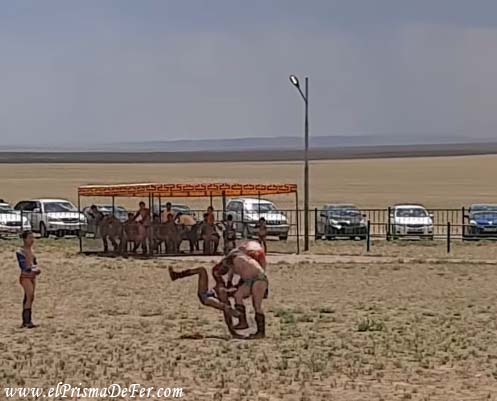
Each fight is surrounded by rituals and symbolism: before the fight begins, the wrestlers perform a ceremonial bow called "deel," a dance that represents respect for their opponents and the spirits of nature. Traditional costumes, called zodog (red jacket) and shuudag (shorts), are an essential part of the ceremony.
Horse racing
The races are another of the most spectacular elements of Naadam, especially in rural areas where the riders are children and adolescents, some as young as 7 years old.
These competitions cover several kilometers across open terrain, and each horse represents not only the rider but also the community that raises it. It's not about extreme speed, but rather about endurance and horsemanship, which are essential to nomadic life.
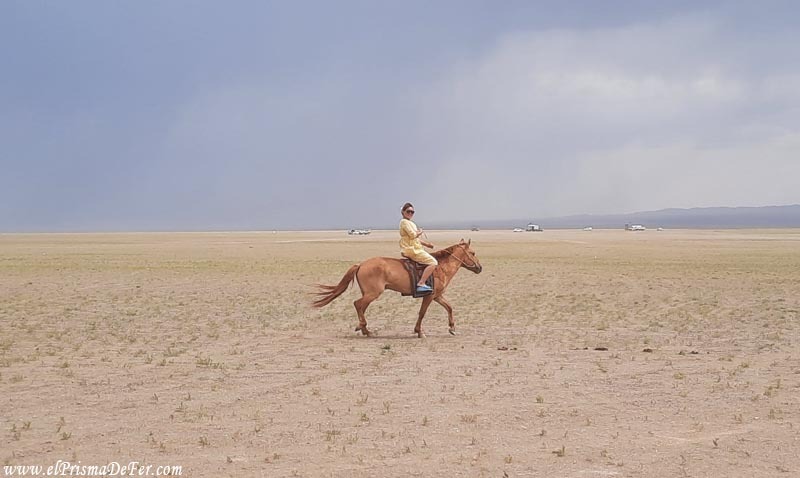
Before the race, riders perform good luck rituals, and spectators often cheer with traditional songs and drums.
Archery
Archery, originally a military practice, keeps traditional hunting and defense skills alive. Archers use longbows and arrows that must hit targets tens of meters away.
The competition combines technique, concentration, and tradition: the archers wear traditional costumes and participate in ceremonies that include songs and blessings to ensure accuracy and luck, thus transmitting the connection between sport and ancestral culture.
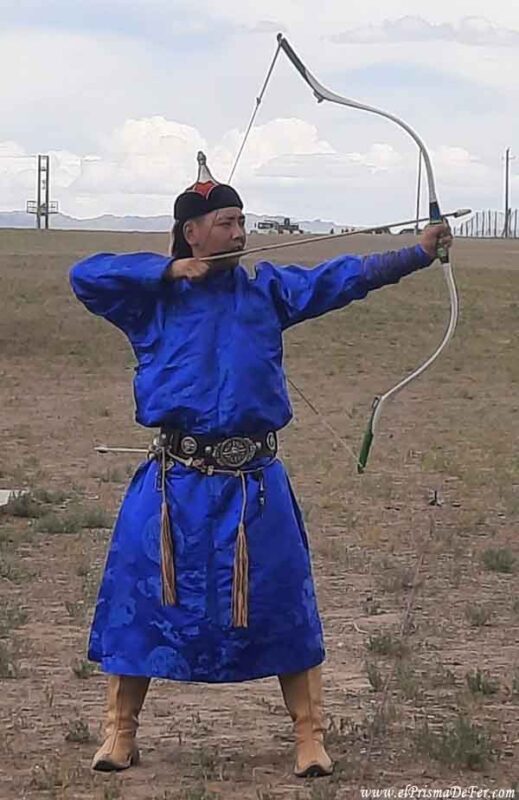
These three disciplines are not just competitions, but a reflection of Mongolia's identity and history, passed down from generation to generation and celebrated with music, dance, and rituals that enrich the Naadam experience.

When is Naadam celebrated?
Naadam is celebrated annually from July 11 to 13, coinciding with Mongolia's warmest season, allowing for outdoor events. While the official date is the same across the country, festivals in small towns may be scheduled a few days earlier or later to accommodate the local community and logistics.
During these days, the fields and squares fill with competitors, spectators, and visitors, creating a festive and colorful atmosphere that combines sport, traditions, and community life. In addition to the main competitions, cultural activities and fairs featuring traditional food and crafts are often organized.
Where is it held in Ulaanbaatar and how much does it cost?
In the capital, Naadam is celebrated mainly at the Ulan Bator National Stadium and in some large squares and public spaces where events and competitions are held. This is where most tourists and spectators gather, wanting to experience the festival in its largest and most official form.
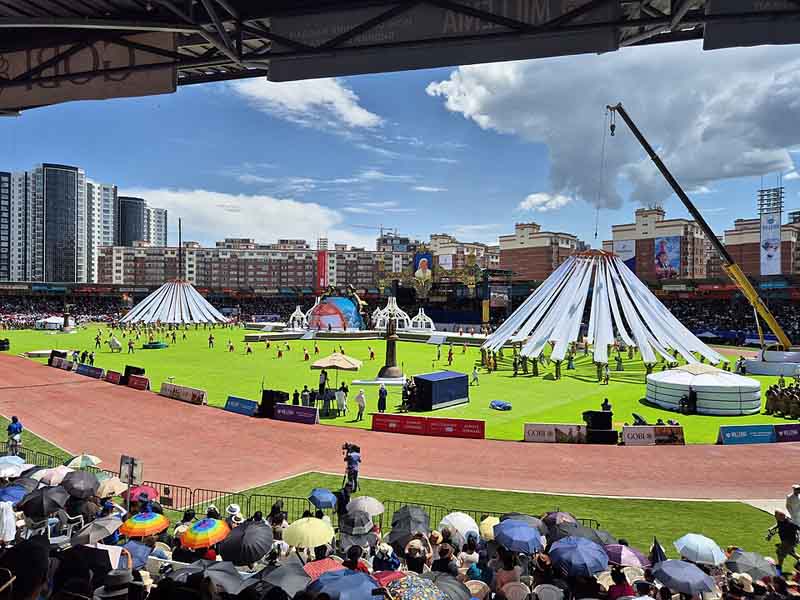
The ticket price varies depending on the type of event and the seating location:
- Ticket prices for the Naadam Festival opening ceremony, especially for the tourist stand, are usually expensive, between 50 and 100 USD.
- Tickets for major wrestling, archery, and horse racing events typically cost between $10 and $20, while access to general areas or viewing from outside the stadium can be free or much cheaper.
- Tickets are usually available one week before the festival and can be purchased through tour operators in Mongolia or at the ticket offices during that week.
Naadam in the interior villages
While the grand Naadam in Ulaanbaatar draws the attention of travelers and locals alike, the experience in the inland villages is much more intimate and authentic. There, the games are held in open fields, without stands or crowds, allowing visitors to be practically right next to the wrestlers, horses, and archers.
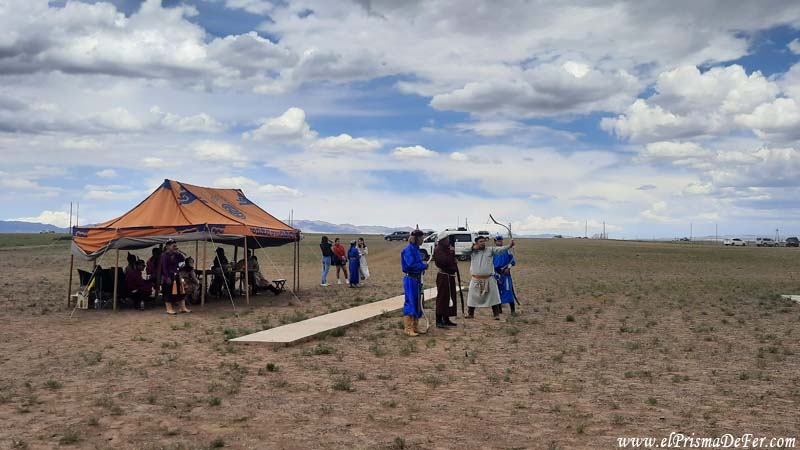
Furthermore, unlike the capital's stadium, in these towns, admission is completely free and the atmosphere is more communal, with entire families participating, sharing food, and enjoying the traditions.
Watching a rural Naadam is a unique opportunity to experience Mongolian hospitality firsthand, talk to the local people, and experience the festival not as a distant spectator, but as part of the celebration.


My experience in a rural Naadam
When I was in Dalanzadgad, I had finished my tour through the Gobi Desert and I was told that the nearby village of Bayandalai was celebrating Naadam. Without hesitation, I asked to be taken there so I wouldn't miss the opportunity to see it.
The festival was held on the outskirts of the town, in an open field where simple stands had been set up, all with a much more humble air than the spectacle usually given in Ulaanbaatar.
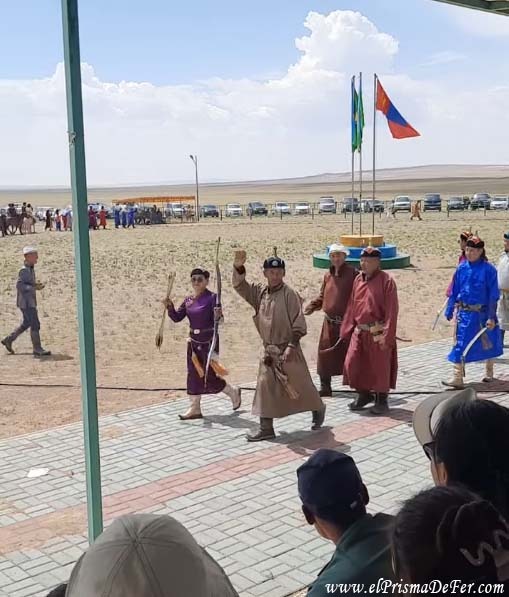
Opening ceremony
The opening ceremony was brief but steeped in tradition, and what I loved most was that everything was 100% local: village families, young and old competitors, and a community atmosphere that was easy to feel part of. There was no distance between tourists and participants, and this closeness allowed me to enjoy one of the most genuine experiences of my time in Mongolia.
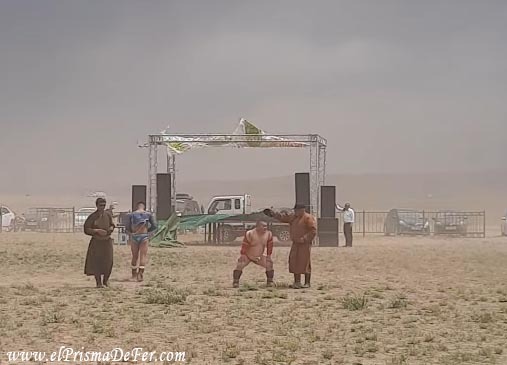
The fighters were literally right next to me; I could see every movement and their expressions of concentration between fights. When there was a pause, I only had to walk a few meters and I was already in front of the archers.
To my surprise, I noticed that not only men participated, I also saw several women competing with great skill, breaking my idea that they were exclusively male games.
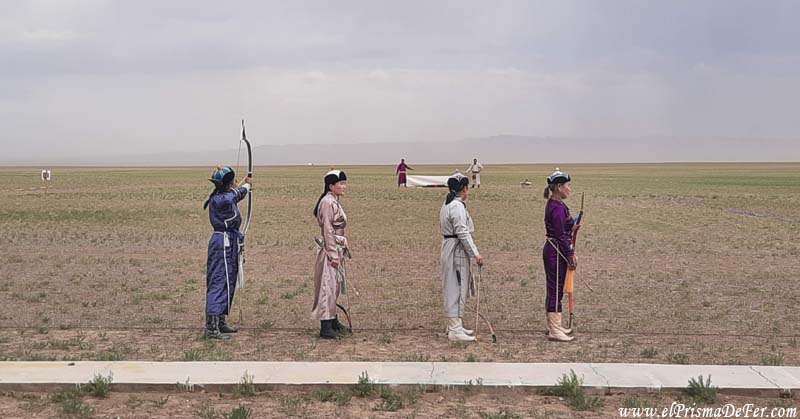
The most epic moment came when a sandstorm arose in the middle of the competition. The wind blew hard, visibility was low, but the wrestlers kept going, unwavering, as if the weather were part of the challenge itself. This blend of tradition and resilience made the day one of the most memorable experiences of my entire trip to Mongolia.

The closing of my experience in rural Naadam
The storm ended up being so strong that they paused the competition, and that's when I ran into a small problem. I had to go back to Dalanzadgad, but the driver who had taken me had already left. There was no choice but to try hitchhiking in the middle of the steppe.
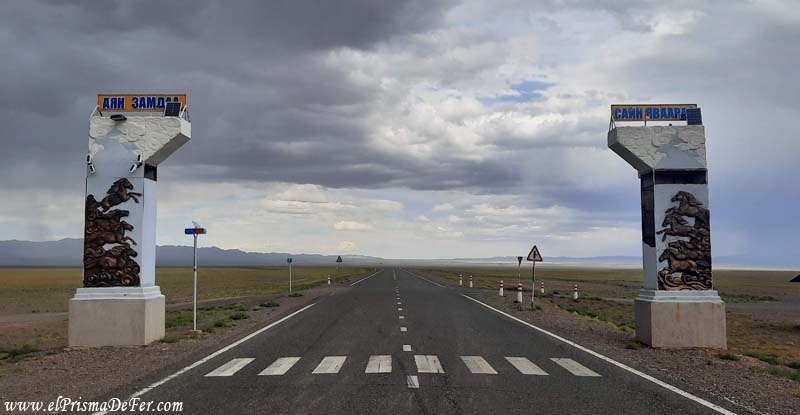
About 20 minutes passed until a van stopped and picked me up, without asking for anything in return, a totally selfless gesture that contrasts with what had happened to me in Moron on the way to Khatgal, where they picked me up but asked me for money at the end.
Video summary of the Naadam festival in Inner Mongolia
Reflections on attending Naadam in a Mongolian village
I loved being able to experience Naadam from another point of view. I'm not saying it's better or worse than seeing it in Ulaanbaatar: there the spectacularity and the show are there, while in a town in the interior the experience is much more local, authentic and traditional. It was special to be so close to the wrestlers, the goalkeepers, and the locals, sharing a very different atmosphere than that of a big stadium.
Of course, you also have to be realistic: after several hours, the games can become a bit repetitive and become tiring. Still, I think it's well worth experiencing Naadam in its simplest form, because it gives you a different perspective on Mongolia and its deepest traditions.
Support The Prism of Fer!
Your support helps me continue creating free content on the blog. Thank you so much!


